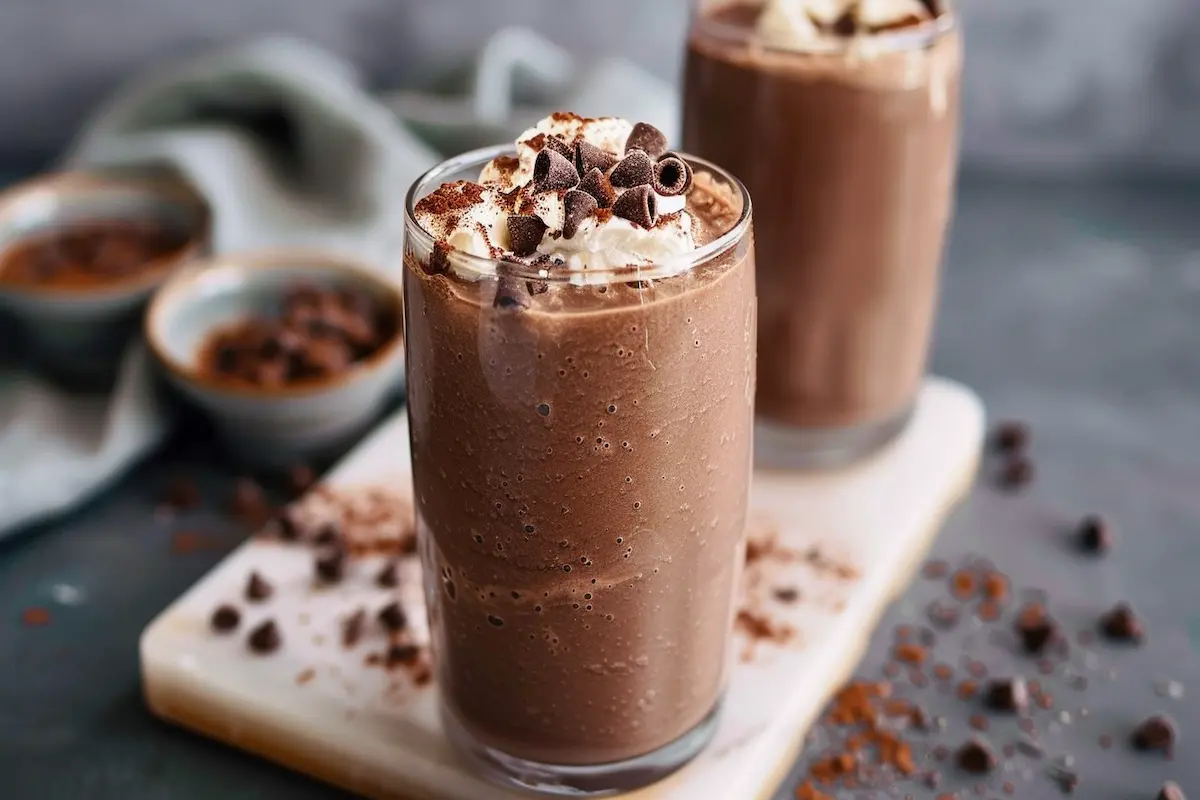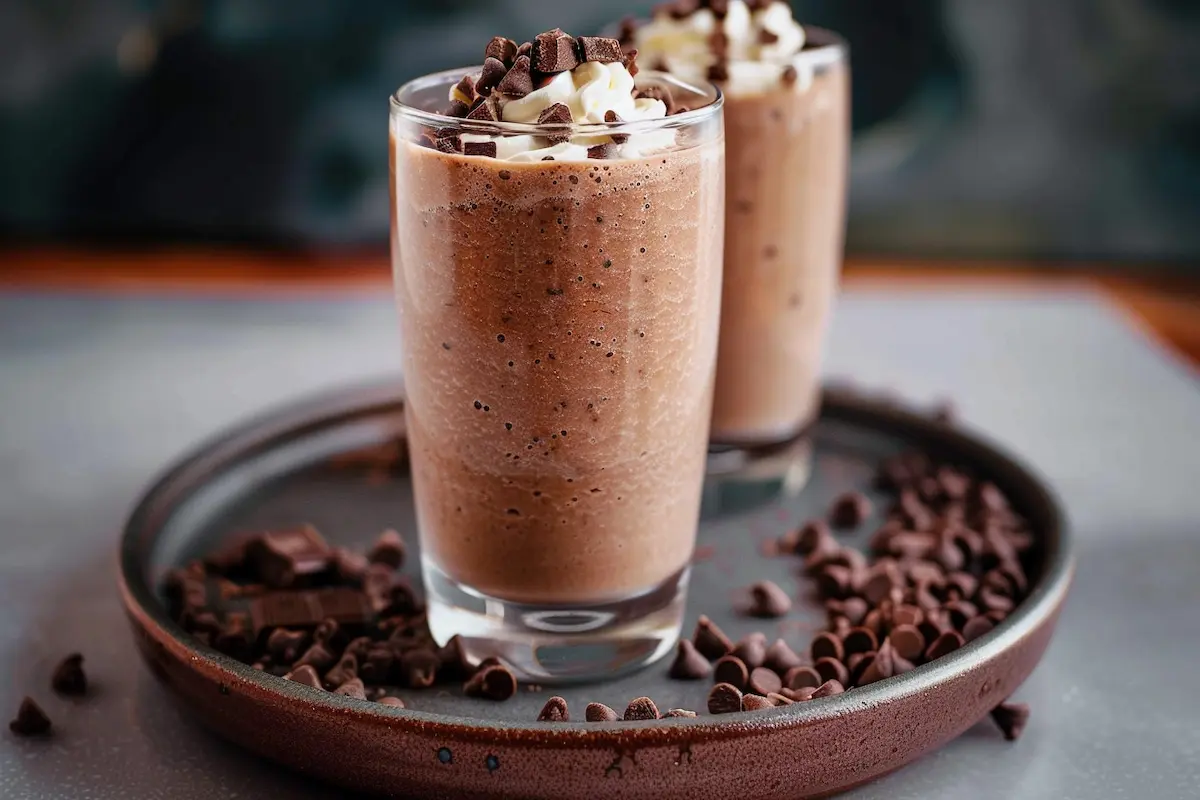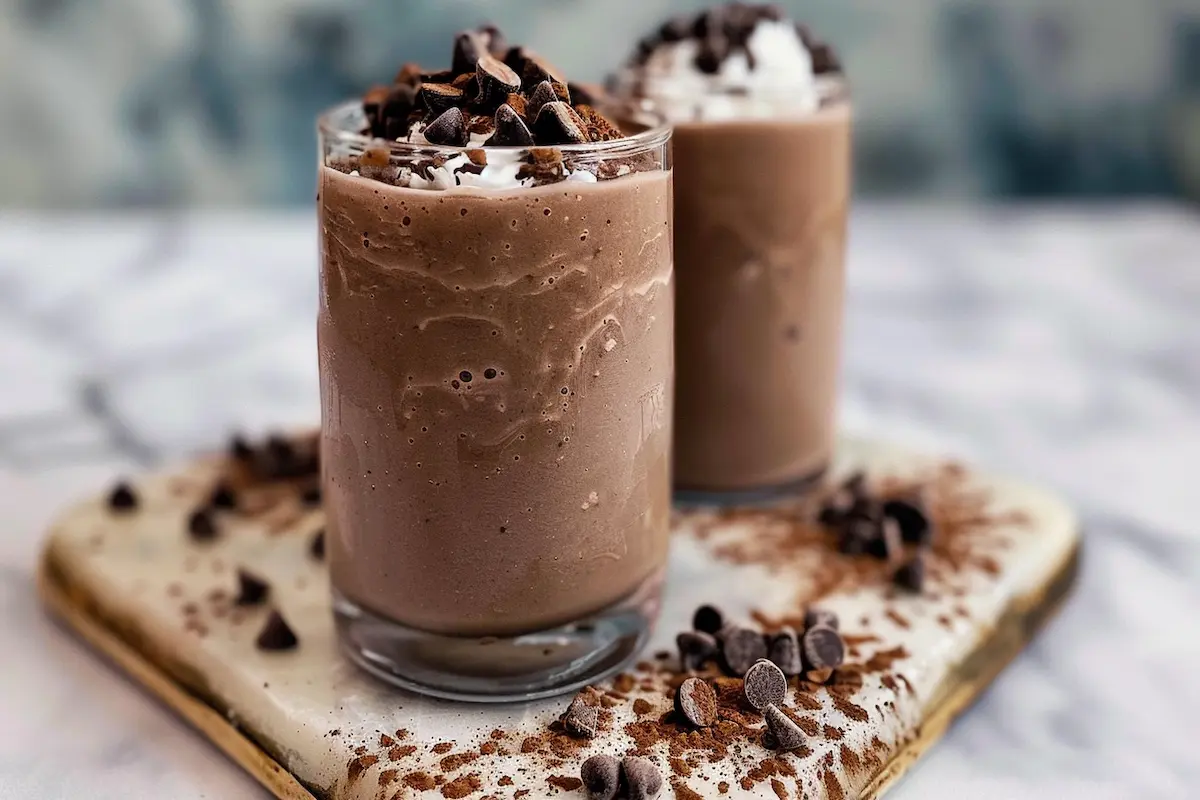Introduction
In the world of fitness, nutrition, and health-conscious living, the chocolate protein shake has emerged as one of the most beloved and versatile tools in the quest for optimal health and performance. Whether you’re a gym enthusiast aiming for muscle growth, someone managing their weight, or just in need of a quick, nutritious snack, a chocolate protein shake can be your go-to solution. It’s convenient, packed with essential nutrients, and—when made right—absolutely delicious.
What Is a Chocolate Protein Shake?
At its core, a chocolate protein shake is a blended drink that typically includes protein powder, chocolate flavoring (either from cocoa powder or chocolate-flavored protein powder), and a liquid base like water, milk, or plant-based alternatives. Beyond this, however, the possibilities are endless. With the addition of fruits, seeds, nuts, and other ingredients, you can turn a basic shake into a nutritional powerhouse.
For athletes and casual exercisers alike, protein shakes have become a fundamental part of daily nutrition routines. While there are many flavors to choose from, chocolate consistently ranks as one of the most popular. Why? Simply put, chocolate combines the indulgence of dessert-like taste with the practical benefits of post-workout recovery and nutrition.

The Importance of Protein in Your Diet
Before diving into the world of chocolate protein shakes, it’s important to understand why protein is essential for overall health and fitness. Protein is made up of amino acids, which are the building blocks of muscle, skin, hair, and even our bones. It plays a critical role in many bodily processes, including:
- Muscle Repair and Growth: After intense exercise, especially strength training, muscles need protein to repair and grow.
- Satiety and Weight Management: Protein is more satiating than fats or carbohydrates, which means it helps keep you full longer. This is why high-protein diets are often associated with weight loss and weight maintenance.
- Metabolic Boost: Protein requires more energy for digestion compared to fats and carbs, which can slightly boost your metabolism.
- Immune Function: Protein is vital for a healthy immune system and helps the body produce antibodies that fight infections.
For most people, the daily recommendation for protein intake is about 0.8 grams of protein per kilogram of body weight. However, athletes or those engaging in regular strenuous exercise often need significantly more, sometimes up to 1.6-2.2 grams per kilogram. This is where protein shakes, especially chocolate protein shakes, come into play.
Why Choose Chocolate Protein Shakes?
Among the various flavors available, chocolate protein shakes are favored for multiple reasons:
- Rich, Satisfying Taste: Let’s face it—chocolate is universally loved. It satisfies cravings for something sweet while offering health benefits, especially when it comes from natural cocoa.
- Versatility: Chocolate pairs well with numerous ingredients, including fruits, nut butters, and spices, allowing endless creativity in your shakes.
- Nutritional Benefits of Cocoa: High-quality cocoa is rich in antioxidants, such as flavonoids, which have been shown to improve heart health and reduce inflammation.
- Wide Availability: Chocolate-flavored protein powders are available across all major protein types—whey, casein, plant-based, and collagen—making it accessible to different dietary needs.
Types of Protein Powders for Your Chocolate Protein Shake
To create the best chocolate protein shake, it’s crucial to choose the right type of protein powder based on your dietary preferences and nutritional goals. Here are the most common types:
1. Whey Protein
Whey is a by-product of cheese production and is among the most popular protein sources used in shakes. It is rapidly absorbed by the body, making it an ideal option for post-workout recovery. It contains all nine essential amino acids, making it a complete protein.
- Best for: Muscle growth, quick recovery, and those not sensitive to dairy.
- Drawback: It may not be suitable for people with lactose intolerance or dairy allergies.
2. Casein Protein
Casein is another milk-based protein, but unlike whey, it is slowly absorbed by the body. This makes it ideal for nighttime consumption as it provides a sustained release of amino acids.
- Best for: Overnight muscle recovery and maintaining muscle mass during fasting periods.
- Drawback: Like whey, casein isn’t suitable for people with dairy sensitivities.
3. Plant-Based Proteins
For vegans or those with dairy allergies, plant-based proteins are the best alternative. These include protein sources like pea, hemp, brown rice, soy, and quinoa. Plant proteins are often slightly lower in protein per gram compared to whey or casein but are still highly effective, especially when combined to create a complete amino acid profile.
- Best for: Vegans, vegetarians, and those avoiding dairy.
- Drawback: Some people find plant proteins to have a grittier texture or a more earthy flavor, though chocolate can help mask that.
4. Collagen Protein
Collagen is an increasingly popular protein option that comes from animal sources. It’s known for supporting joint, skin, and hair health in addition to muscle recovery. However, it’s not a complete protein, so it should be supplemented with other protein sources if you’re using it for muscle growth.
- Best for: Joint health, skin elasticity, and overall recovery.
- Drawback: Collagen is not suitable for vegetarians or vegans.
How to Make a Perfect Chocolate Protein Shake
Now that you’ve selected the ideal protein powder, it’s time to create your delicious chocolate protein shake. Here’s a base recipe with suggestions for customizing it to your needs.
Classic Chocolate Protein Shake Recipe
Ingredients:
- 1 scoop chocolate protein powder
- 1 cup unsweetened almond milk (or milk of your choice)
- 1 tablespoon peanut butter (optional for added flavor and fats)
- 1 banana (optional for texture and sweetness)
- 1 tablespoon unsweetened cocoa powder (for a deeper chocolate flavor)
- A handful of ice cubes
Instructions:
- Add all ingredients to a blender.
- Blend on high for about 30-45 seconds, or until smooth.
- Pour into a glass and enjoy!
Ways to Enhance Your Chocolate Protein Shake
The beauty of a chocolate protein shake lies in its versatility. Here are some easy ways to upgrade your shake with superfoods and other nutrient-packed ingredients.
- For Extra Protein: Add Greek yogurt, cottage cheese, or even a second scoop of protein powder.
- To Boost Fiber: Blend in a tablespoon of flaxseeds, chia seeds, or oats.
- To Add Healthy Fats: Include avocado, almond butter, or a splash of coconut oil.
- For Antioxidants: Throw in a handful of spinach, kale, or blueberries.
- For Sweetness: Use natural sweeteners like honey, maple syrup, or Medjool dates.
Pro Tip: To make your shake thicker and more filling, add frozen fruits like berries, frozen banana slices, or even frozen cauliflower. Frozen ingredients will also give your shake a milkshake-like consistency.
Chocolate Protein Shake for Weight Loss
If your goal is to lose weight or maintain a healthy weight, incorporating a chocolate protein shake into your diet can be a highly effective strategy. High-protein diets are known to reduce hunger and curb appetite, which can lead to reduced calorie intake. Here are some tips for making your shake weight-loss friendly:
- Keep It Low-Calorie: Opt for water or unsweetened almond milk as your base to keep calories in check.
- Limit Sugary Add-Ins: Avoid adding too many high-sugar fruits or syrups. Stick to low-glycemic options like berries and use a natural, low-calorie sweetener like stevia if needed.
- Incorporate Fiber: Adding fiber to your shake, such as chia seeds or ground flaxseeds, will help you feel fuller for longer, preventing cravings later in the day.
- Watch Portion Sizes: While protein is great, it’s still important to keep your portion sizes appropriate. A single scoop of protein powder (20-30 grams of protein) is typically sufficient for most people.
For a balanced weight-loss shake, pair your protein with a source of healthy fats and fiber. You could pair it with a side of Ultimate Baked Beans or enjoy it alongside a protein-packed Protein Donut for a balanced, nutritious snack.
Pre- and Post-Workout Nutrition with Chocolate Protein Shakes
Whether you’re working on building muscle, toning, or improving endurance, timing your protein shake intake can have a significant impact on your performance and results.
Pre-Workout Chocolate Protein Shake
Drinking a chocolate protein shake before your workout can provide your muscles with the essential amino acids they need for fuel and repair. It also keeps your energy levels high without making you feel too full. Here’s an ideal pre-workout shake recipe:
Pre-Workout Shake Recipe:
- 1 scoop chocolate protein powder
- ½ cup oats (for slow-digesting carbs)
- 1 tablespoon almond butter (for healthy fats)
- 1 cup water or coconut water
- A handful of frozen berries (for antioxidants and quick-digesting carbs)
Blend and enjoy 30-60 minutes before your workout for optimal energy and performance.
Post-Workout Chocolate Protein Shake
The post-workout window is a crucial time to get protein into your body, helping with muscle repair and recovery. A chocolate protein shake within 30 minutes after your workout ensures that your muscles get the nutrients they need to recover and grow stronger.
Post-Workout Shake Recipe:
- 1 scoop chocolate whey protein
- 1 cup almond milk or water
- 1 banana (for quick-digesting carbs)
- 1 tablespoon peanut butter (for fats and extra protein)
This shake helps replenish your glycogen stores and repairs muscle tissue after strenuous physical activity.
Is a Chocolate Protein Shake Good for Breakfast?
Yes! A chocolate protein shake can be a quick, easy, and nutritious breakfast option, especially if you’re on the go or don’t have time for a full meal. When made with the right ingredients, it can provide a balanced ratio of protein, healthy fats, and carbohydrates that keep you energized throughout the morning.
High-Energy Breakfast Chocolate Protein Shake
For a more substantial breakfast shake, try adding ingredients that pack more energy:
- 1 scoop chocolate protein powder
- 1 cup of oats
- 1 tablespoon of chia seeds
- 1 tablespoon of almond butter
- 1 banana
- 1 cup almond milk
This shake can help you stay full until lunchtime while providing sustained energy and essential nutrients.
Chocolate Protein Shake Recipes for Different Diets
One of the best things about a chocolate protein shake is that it can be customized for different dietary preferences or restrictions. Here are variations tailored to popular diets:
1. Keto-Friendly Chocolate Protein Shake
For those following a ketogenic diet, which emphasizes high-fat and low-carb intake, this keto shake keeps you in ketosis while providing plenty of protein:
- 1 scoop chocolate whey protein (or keto-specific protein powder)
- 1 tablespoon coconut oil or MCT oil
- 1 tablespoon cocoa powder
- 1 cup unsweetened almond milk
- 1 tablespoon chia seeds
This shake is low in carbs, high in healthy fats, and packed with protein.
2. Vegan Chocolate Protein Shake
A vegan-friendly protein shake is easy to make and can be just as delicious as a traditional one. Use plant-based protein powders and alternative milk options:
- 1 scoop chocolate pea protein or brown rice protein
- 1 cup unsweetened almond or coconut milk
- 1 tablespoon almond butter
- 1 tablespoon cacao powder
- 1 tablespoon chia seeds
This plant-based shake is perfect for vegans or anyone avoiding animal products.
3. Paleo Chocolate Protein Shake
For those following the paleo diet, which focuses on whole foods, a paleo-compliant protein shake is a great post-workout option:
- 1 scoop of paleo protein powder (made from egg whites or collagen)
- 1 cup coconut milk
- 1 tablespoon almond butter
- 1 tablespoon cacao powder
- A handful of ice

FAQ: Common Questions About Chocolate Protein Shakes
Here are answers to some frequently asked questions regarding chocolate protein shakes:
1. Can I Use Water Instead of Milk in My Protein Shake?
Yes, you can use water as the base for your protein shake if you want to reduce calories or keep it simple. However, using milk or plant-based alternatives like almond or oat milk can add creaminess and additional nutrients.
2. How Long Can I Store a Protein Shake?
It’s best to consume your shake immediately after making it for optimal freshness. However, you can store a prepared protein shake in the refrigerator for up to 24 hours. Be sure to give it a good shake or blend before drinking, as some separation may occur.
3. Can I Drink a Chocolate Protein Shake Every Day?
Yes! You can drink a chocolate protein shake every day as part of a balanced diet, especially if you’re working out regularly or have increased protein needs. Just make sure to balance your shakes with whole foods rich in fiber, vitamins, and minerals.
Conclusion: Why Chocolate Protein Shakes Deserve a Spot in Your Diet
In conclusion, the chocolate protein shake is not just a post-workout staple; it’s a delicious and versatile addition to any meal plan. Whether you’re using it for muscle recovery, weight loss, or simply as a convenient and satisfying snack, its benefits are clear. With endless customization options, from plant-based to keto-friendly versions, there’s a chocolate protein shake recipe for everyone.
Pair it with healthy snacks like Ultimate Booty Dip or Protein Donuts for a balanced, nutritious intake that supports your health goals.

